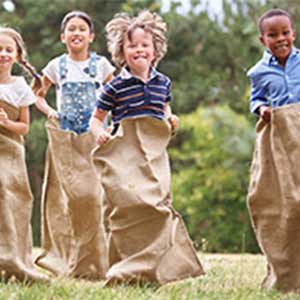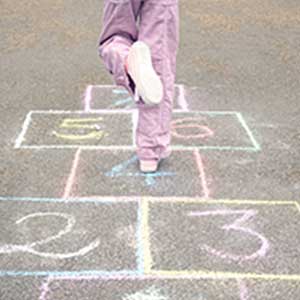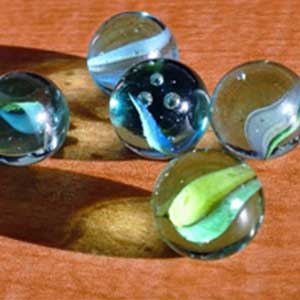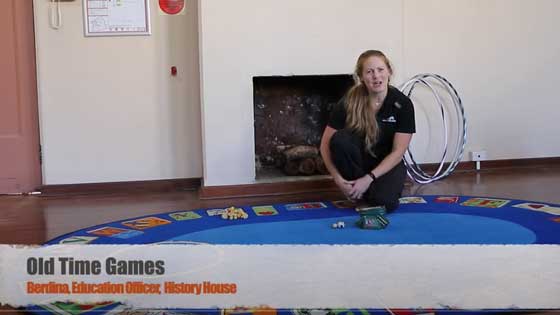This activity is usually part of our In the Classroom program offered at the History House Museum. It has been adapted as an online resource to use in conjunction with a short video.
The activities suggested in this program are directly linked to parts of the history curriculum from PP - Year 4. Select the most appropriate activities or research questions to your age group.
1. Activities to do before watching the video
Here are a few questions to ask students before you watch the video to help create a context around the old time games the video introduces.
- Research the kind of chores children were expected to do in the ‘olden days’. Choose a specific time period to help focus your research. Time frames could include our grandparents time (e.g. the 50’s), war times, the great depression years (1930’s), the federation years (late 1800’s – early 1900’s). Compare these to the chores children are expected to do today.
- When and where would have children in the ‘olden times’ played games? (E.g. the town square, streets/footpaths).
- Challenge students to think of what kind of games they would play if there were not shops around to purchase the toys/games they have today. Are there other ways to purchase games? (E.g. mail catalogue). Write a list of all the toys/games they commonly play (e.g. technology/battery based toys, board games, computer games, soccer/football) and then write a list of toys/games that would have been played in the ‘olden days’. What is different about the two lists? What is the same?
- Provide students with a range of objects (real or a list) that they have to use to make up a game. They need to establish fair rules and an aim and/or point system. The list could include any objects easily available in nature, or commonly found in a house or shed such as; sticks, small stones, honky-nuts, wire, brushes/brooms, paper bags, newspaper, potato sacks, chalk, sand, spoons, string, rope, ribbon, cloth, bottles, wooden, cardboard or plastic containers or boxes, egg cartons – anything! When the games have been made ask other class or family members to try them.
2. Watch Video
Watch the video Old Time Games for some basic history and instructions of a selection of traditional games.
Use these time indicators to toggle to specific game explanations on the video:
Marbles - 0:45
Knucklebones - 3:28
Quoits - 7:20
Hopscotch - 9:30
Other ideas - 13:40
3. Further Research and Activities
- Choose a common ‘olden days’ game and find out where it came from. Was it originally used to help improve work skills? How did it evolve over time? When do we remember Anzac day? When did the Anzacs fight?
- Ask students to talk to parents or grandparents about the chores they did as children or the games they played as children (oral history).
- Ask students to collect photos or objects (artefacts) from their parents and grandparents lives when they were children and write a story about them.
- Research the types of games Aboriginal children would have been involved in.
- Play the ‘olden day’ games yourself! You may have some of these games at school or home, if not, be creative and either make or use what you have to practice the skills!
Here are some ideas:

Sack Race
While traditionally played in hessian flour or potato sacks, these are not as easy to come by. You may be able to find a store that will roast its own coffee and have coffee bean sacks. For small children use a pillow case, or get creative and make your own from an old sheet or other material!
Quoits
The hob can be any kind of stake in the ground or stick that is held upright. You could use something as simple as a wooden spoon held up in a container with sand or wedged between two other objects. Make the quoits from wire, old clothing hangers, rope, a belt, or cardboard.

Hop Scotch
Use string, tape or chalk to create your own hopscotch court, remember they can be as long as you like to be more challenging!

Skipping ropes & Hula Hoops
These are still available in the toys or sports section of some stores. To learn the skill of skipping however you can use any type of rope that is not to light so that it will swing well.
Knucklebones
Also known as ‘jacks’ is also available in the toys section of some stores. However, you could use any 5 items of similar size and weight. Try bottle tops, Lego pieces or even wrapped lollies that you could add variations of the rules to about eating them.
Egg and Spoon Race
For the young ones start with a bigger spoon, a serving spoon or ladle to practice the skill and grasp the concept and graduate to smaller spoons. Use anything you have that is egg size – eggs were used because they were easily available, and their size, shape and shell makes for a perfect challenge! However, tomatoes, potatoes, fruit or balls (golf, Ping-Pong, tennis) can all be used.

Marbles
These are still available in most shops. If you do not have different sizes just use the small ones for all the games, they may just require more skill! Again, if you don’t have marbles any alternative round object could work, including lollies (the hard peppermint type works well) beads or ball bearings.
Three legged race
This is a group race that you will need a partner for – use a cloth tie – any scrap material or scarf or something similar can be used – to tie one of your legs to your partner’s legs. Together you now need to run the distance of the ‘court’ in a race with the rest of the group!


